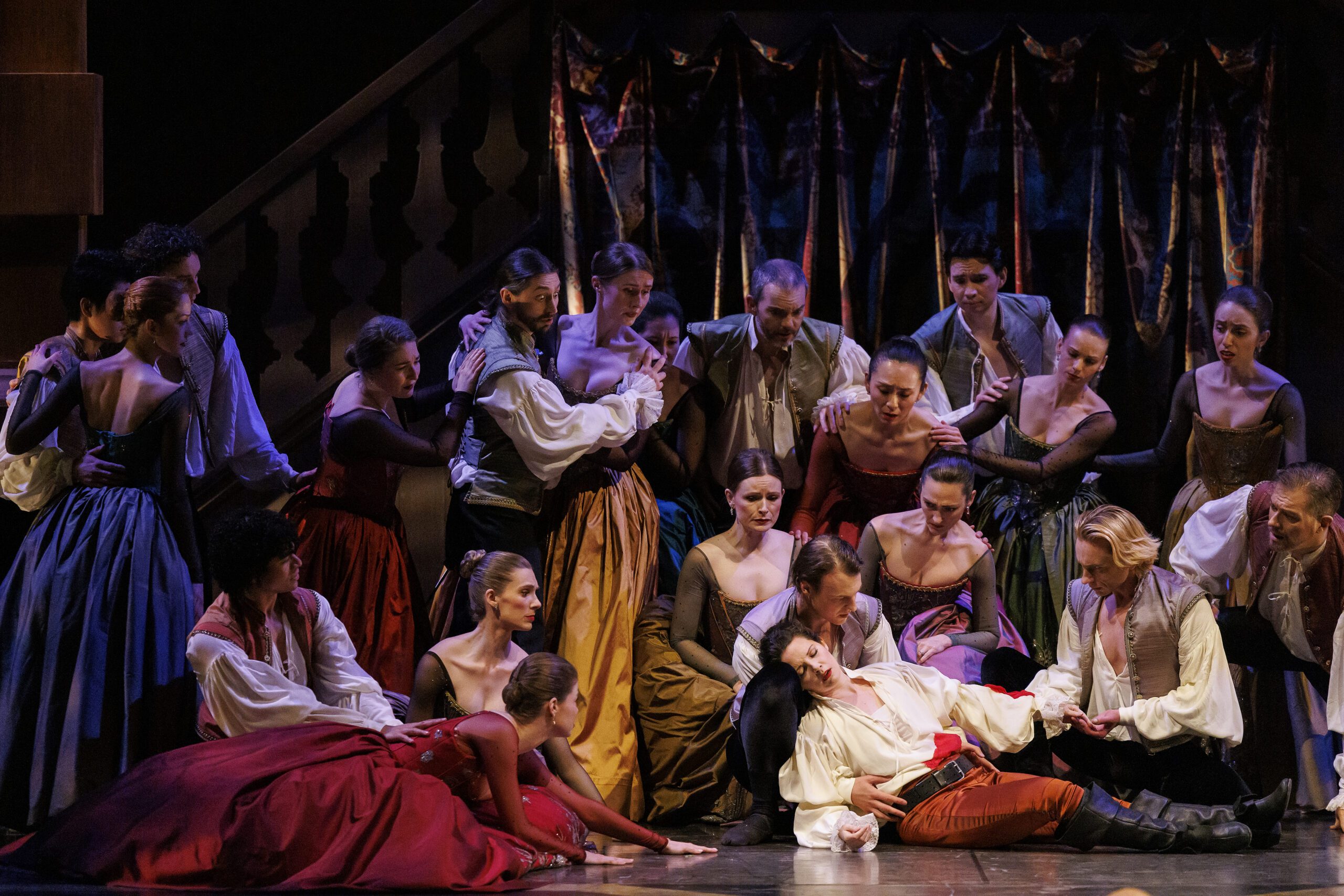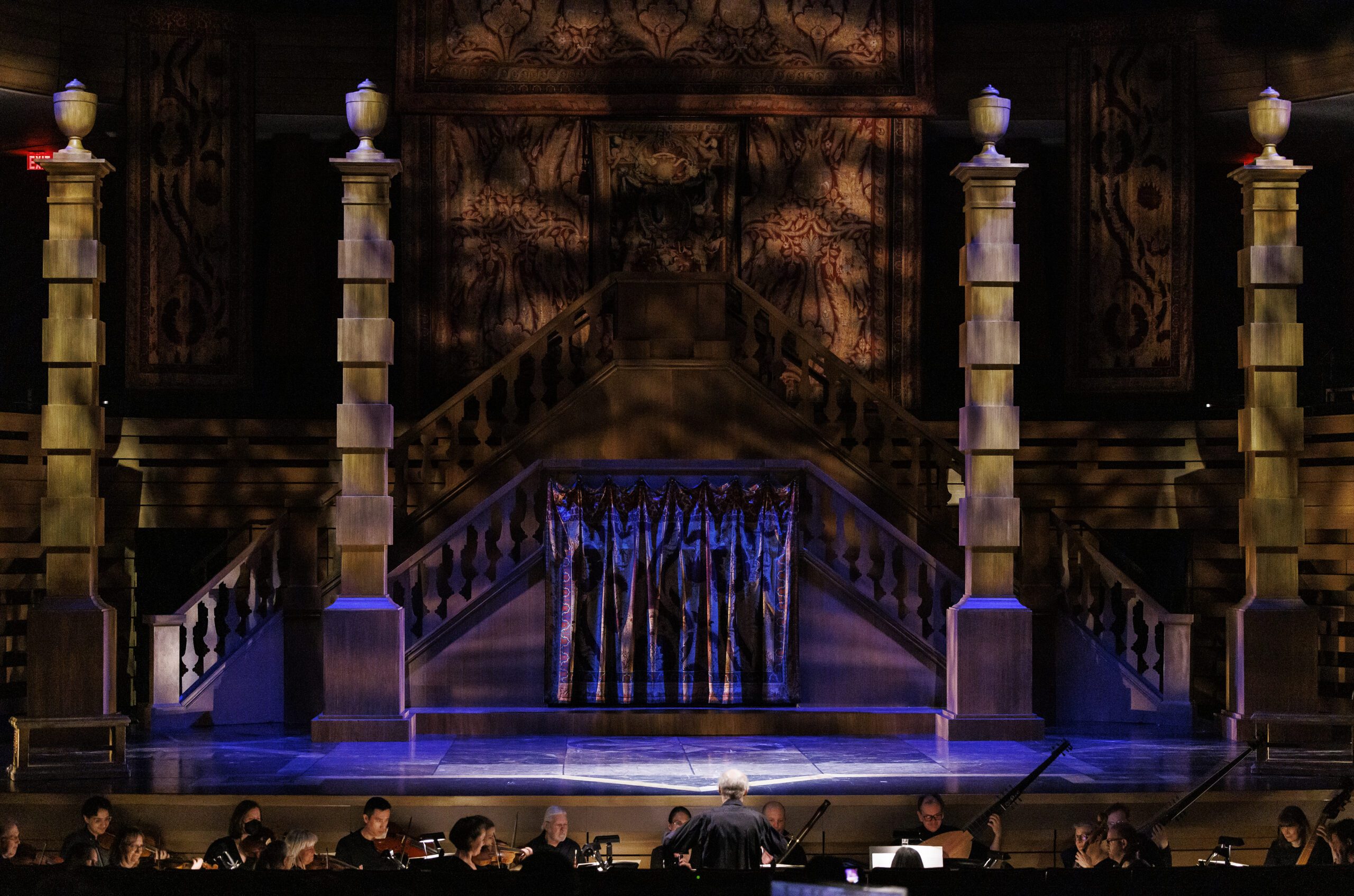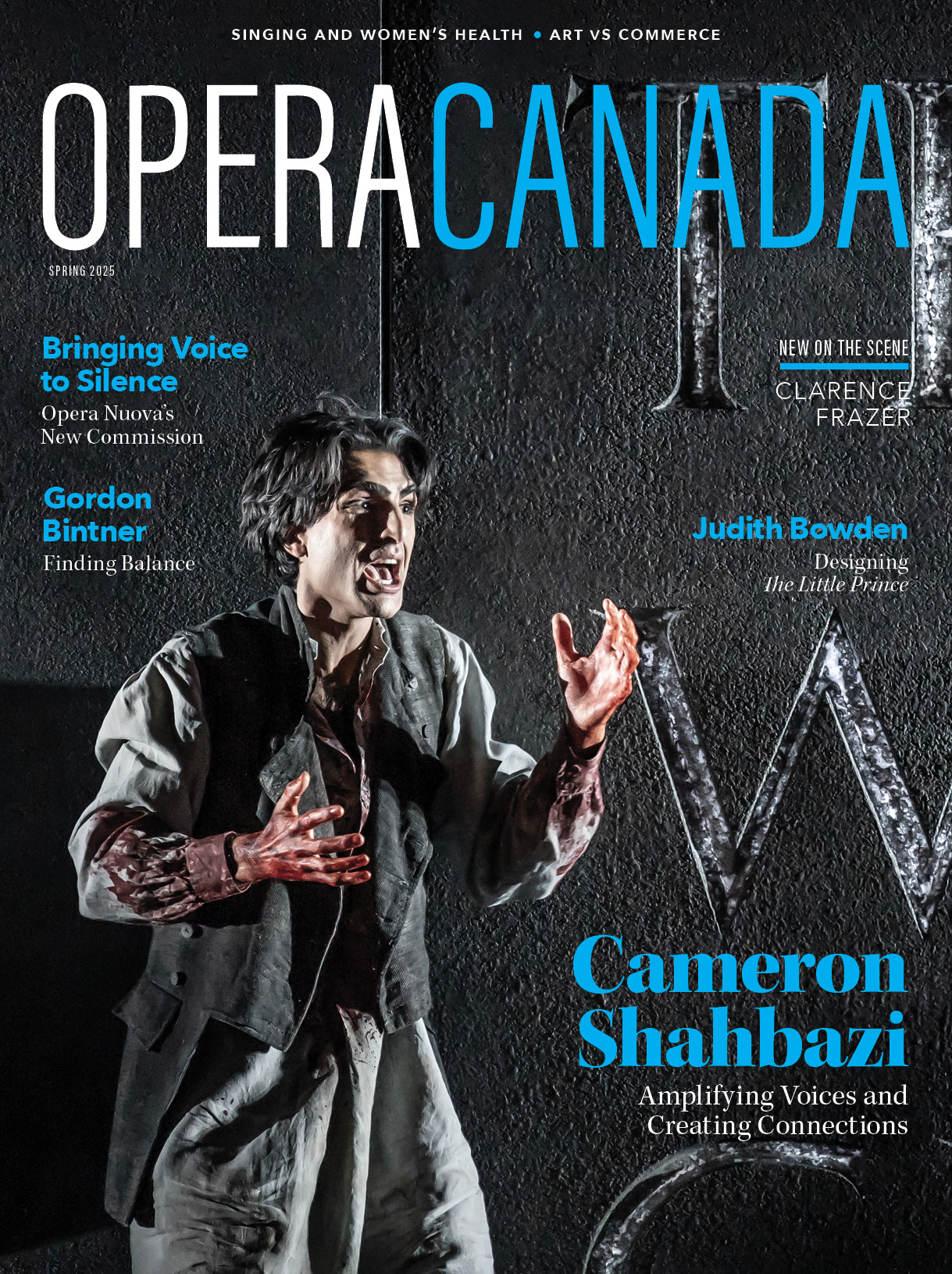The second part of Opera Atelier’s (OA) 2024/25 season was Marc-Antoine Charpentier’s 1688 work David et Jonathas at Koerner Hall, directed by Marshall Pynkoski with choreography by Jeannette Lajeunesse Zingg.
It’s unusual for a French opera of the period. It wasn’t written for the Court but rather for a Jesuit College, where it was performed (by an all-male cast, of course) along with a spoken play on the same theme in Latin – an act of the play following each act of the opera. So despite having a prologue and five acts, the opera has little recitative and is quite compact, which makes for a reasonable length evening if at the price of some difficulty following the plot!
That plot, of course, is taken from the Book of Samuel and concerns David’s love for Jonathas, son of the increasingly paranoid Saül, King of Israel. When the opera opens, Saül has already transgressed the laws of the Israelites enough to feel abandoned by God and is also losing a war against the Philistines – at least in part because he has exiled his best war leader, David, out of jealousy. He consults the Witch of Endor (here called La Pythonisse) who, assisted by the ghost of Samuel, predicts his doom. The action then plays out with David trying rather desperately to be a loyal Israelite while other characters try to persuade a completely insane Saül to reinstate him or not to do so. Jonathas is torn between duty to his father and love for David. In the climactic battle, both Jonathas and Saül are killed, and David reluctantly becomes king.
For this production Gerard Gauci has created a monumental set with double staircases, pillars and lots of gold. It repurposes some elements from OA’s production of La resurrezione and represents a development in OA’s approach to using Koerner Hall, where painted flats just don’t work. It’s impressive. There’s another innovation, too, in the use of an onstage ensemble of excellent young singers, many of them early music specialists, who supplement the chorus (a welcome return for Tafelmusik Chamber Choir) singing from the gallery. Other elements of the show are pretty much classic OA.

Photo Credit: Bruce Zinger
The death of Jonathas, featuring Mireille Asselin and the company of David et Jonathas
The cast is a mix of OA stalwarts and French imports from the 2022 Versailles production. In the prologue, we get our first look at baritone David Witczak’s Saül. He is a strong singer, but since Saül is clearly nuts and stays that way throughout the opera, there’s only so much he can do with stock baroque acting. The effect is, inevitably, a bit one dimensional. We also get our one brief look at Mireille Lebel singing the contralto (originally haut-contre) role of La Pythonisse. She’s a commanding presence vocally and dramatically, and it’s a shame that she doesn’t reappear. Stephen Hegedus makes a spectacular entrance as the ghost of Samuel and booms out his imprecations with gusto.
OA stalwart Colin Ainsworth is very good in the haut-contre role of David. He sings stylishly and with enough oomph for the hall. He also has tons of experience of making this stylistic approach work dramatically. Mireille Asselin sings the (boy) soprano role of Jonathas with considerable beauty and strong stage presence. The cast is rounded out by baritone Christopher Dunham as the Philistine king Achis and tenor Antonin Rondepierre as the Philistine general Joabel. The problem they have is that, without the spoken play, their motivations are a bit obscure, but they are clearly at home in a production like this and get the job done.
The dancers of the OA Ballet and the members of the onstage ensemble are arranged artfully and colourfully. The choreography is perhaps a bit predictable – lots of prancing and waving sword for the battle scenes for example – but it’s well executed. Tafelmusik provides orchestra and chorus, and they produce an appropriate period sound under the baton of David Fallis who has, of course, much experience in this repertoire.
In many ways it’s a predictable step on the path OA has taken since adding Koerner Hall and Versailles to their portfolio. The developments in set design are interesting, but it’s still very much OA’s way with French baroque, which will more than satisfy their adherents but isn’t likely to convert the skeptical.

Photo Credit: Bruce Zinger
Gerard Gauci’s transformation of Koerner Hall
Opera Canada depends on the generous contributions of its supporters to bring readers outstanding, in-depth coverage of opera in Canada and beyond. Please consider subscribing or donating today.











